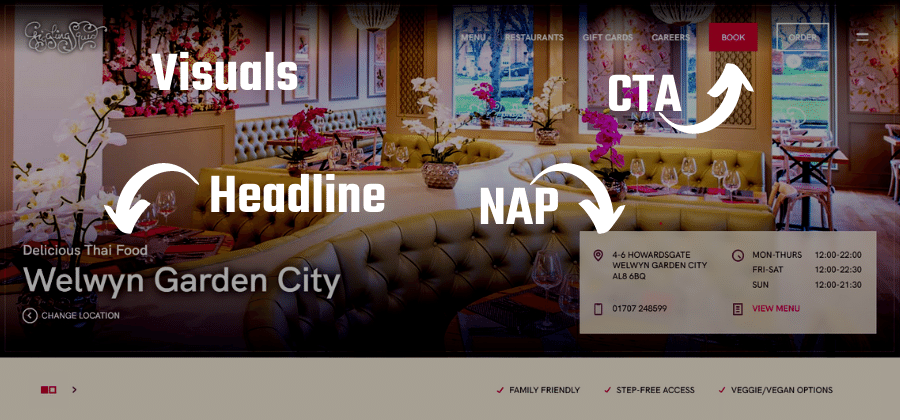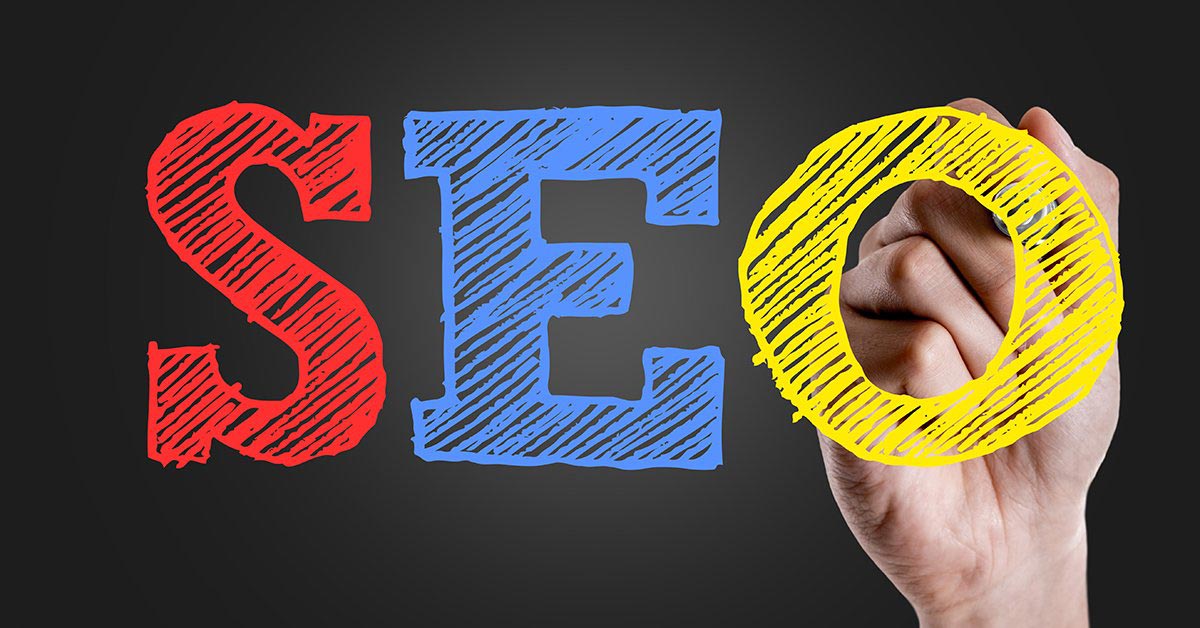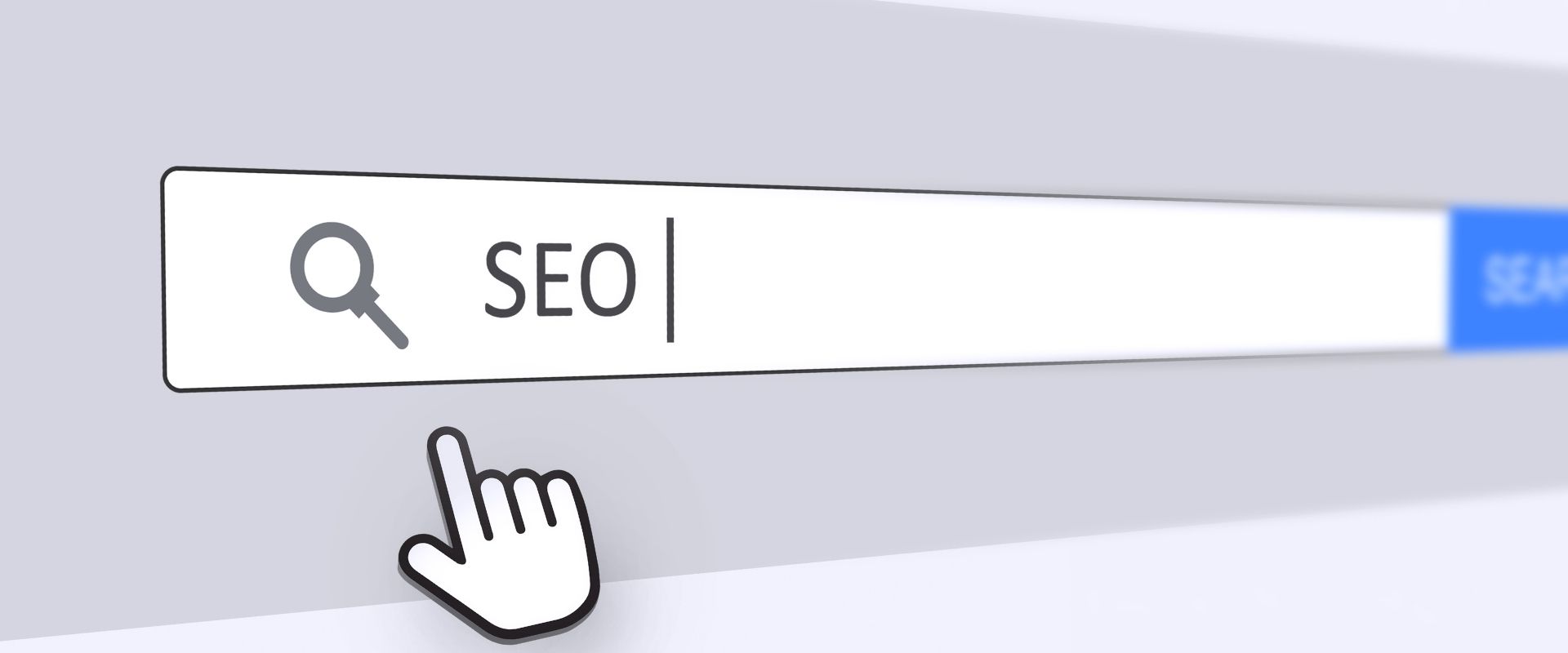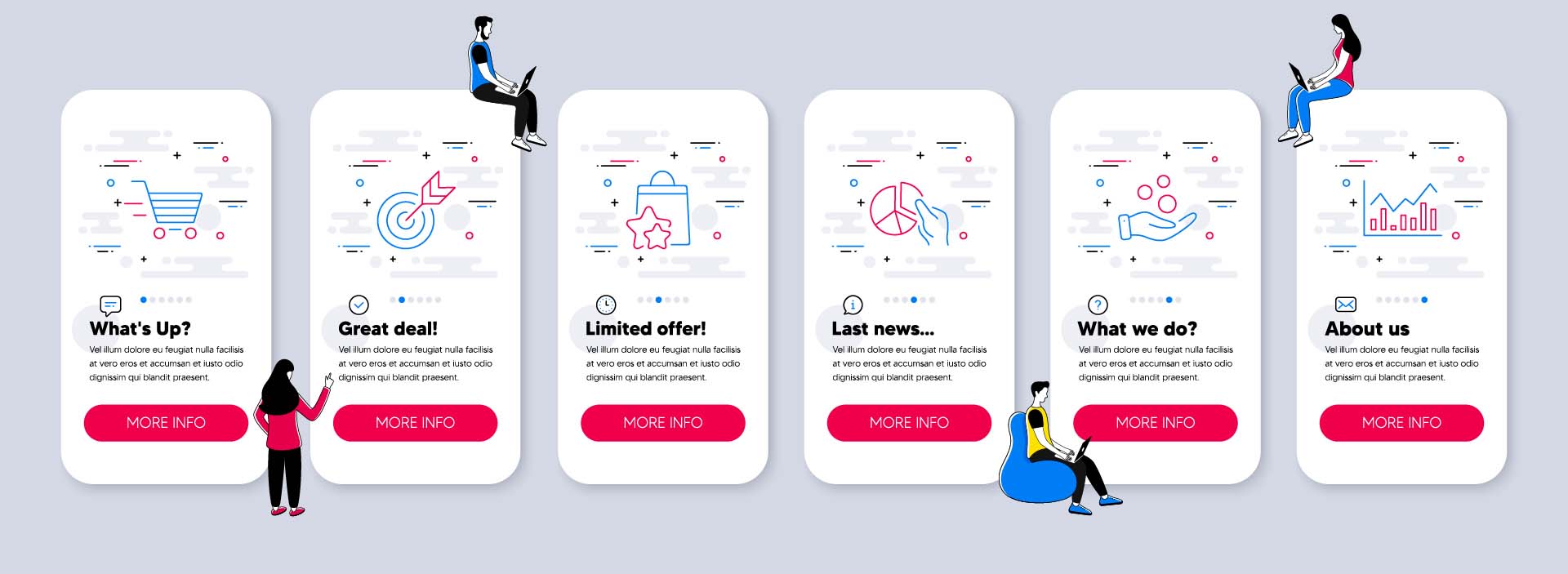Optimising your online presence with Local SEO has far-reaching benefits. It helps your business attract a target audience of local clients and boost your visibility, traffic and revenue through local landing pages.
It’s 2022 already and advice that Matt Cuts outlined in his 2010 blog post is still valid:
If your company has a bunch of store locations, please don’t hide that information behind a search form or a POST. If you want your store pages to be found, it’s best to have a unique, easily crawlable url for each store.
Matt Cuts
An essential part of the process is designing landing pages that have high conversion rates and are geotargeted to your local region.
Landing pages are where website visitors land when they come across a link to your content somewhere on the world wide web. Just like a hotel lobby, you want to provide the best experience from the get-go. Landing pages are the place where you secure conversions, so making sure that they drive results and win customers can help you achieve measurable business growth.
In this step-by-step guide, we will outline how to drive a successful campaign based on results-driven landing pages.
Develop a Local SEO Strategy
Unfortunately, we can’t just dive into creating landing pages straight away. Like everything else, we need to start at the beginning. In this case, that means having a strategy. More often than not, when people use the internet to research services, they want to find local services. Google (and other search engines) know this and will provide them with local search results.
A lot of the time search engines know this because people will literally type in their search plus a location – for example, “mechanics in Birmingham” – indicating that they want local results. However, even if they don’t specify what city they want to look in, Google will use their device location to provide them with local search results anyway.
And most of the time that’s really helpful too!
What’s the percentage of people that actually want to know about the quality of tradesmen/women on the other side of the world when they search for ‘best electrician’? Most of us are very predictable and just want to find the best local electrician to fix our problem and let us get back to our electricity filled day (i.e sticking the kettle on and watching Netflix).
Local searches have a huge impact on organic traffic. Optimizing your online business to capture traffic generated by local searches can result in measurable growth in revenue and visibility.
Let’s look at the statistics.
46% of Google searches involve a local intent.
This shows that internet surfers use Google searches to support their daily life in their community. With almost half of all searches being local, all businesses should be capitalizing on the opportunity to rank first in these results.
This can be done with a combination of Local SEO best practices and an overall SEO strategy for your whole online presence, from your website to your blog to social media.
78% of location-oriented searches result in an offline conversion.
Ranking high in online searches not only impacts your traffic, conversion rates and online sales, but you will also see a boost in your offline sales too.
72% of users who ran a Google search visited a store within 8km of where they were searching.
Users will find resources that are close to home. This statistic makes it very clear that Local Search not only generates high-intent leads but also that businesses that do not rank in these Local Searches will be missing out on potential revenue.

Building a Local Strategy
Local SEO, just like standard SEO and all other marketing techniques, will drive more meaningful results when it is powered by data and market research.
When creating your strategy, apply any knowledge that you may already have about your target audience or conduct some fresh market research. This can include:
- Where your customers are searching from (Check Google Analytics GeoLocation)
- Keywords they search for
- Cultural preferences (Language, Digital Ability, Communication Style)
- Search intent
- Buying patterns
- Customer journey
- Conversion rates of existing landing pages
Once you have done your market research and understand the community that you are targeting, you can begin implementing Local SEO to attract local, targeted customers.
Implementing Local SEO
To start ranking high in Local SERPs (Search Engine Result Pages) you should begin by reviewing how your business performs in relation to the following factors:
- Keyword Research
- Google My Business (GMB)
- Citation Building
- On-Page SEO
- Link Building
- Reviews
The questions you need to ask are:
- Have I applied this to my online business?
- Is this factor being actively managed?
- Is it generating traffic?
- Am I receiving a ROI?
(The answers should be yes.)
Some factors like citations and reviews might exist on 3rd party websites, even without your knowledge, so it’s very important that you have a strategy in place to manage and monitor them!
So, how do landing pages tie in?
The above factors will increase your visibility in Local SEO searches. Each factor describes an opportunity for an internet user to come across your business online. This encounter is called an impression. The aim is to generate clicks from impressions, in other words, you want that user to click on a link and follow it to your website landing page. The factors mentioned above, such as your GMB listing, keyword-optimized content and citations will lead your audience to your landing page.
If you don’t optimize these factors first, your landing page (no matter how good it is), won’t see the optimum amount of traffic.
Site Structure
Before you create your landing pages you should think about how they will fit into your site structure. For a seamless user experience and for SEO, navigation should be intuitive and easy for users of all abilities. A well-structured site will easily guide users to the information they are looking for.
As well as that, search engines will use your site structure to determine what content is important and how each page fits into your overall website.
Site Structure and Local Landing Pages
If your business has one location then one landing page, usually the homepage, is sufficient to greet customers. However, if you operate in multiple locations, then it is best to have a landing page for each location.
In this case, it is useful to structure your various location landing pages under an overview page within your site menu/navigation or website footer. You could include a drop-down menu item entitled ‘Our Locations’ and link to your various landing pages there.
The main thing is to think about where your audience will expect to find these pages. Here are the things you want to consider including on your local landing page:
- Address (office, warehouse, etc)
- Local representative name and contact details
- Local reviews
- Local chamber associations list
- Images / videos specific to the location
Site structure has a significant impact on usability and visibility. To prevent your website from becoming messy as you add more content, managing your site structure should be part of your strategy.
Create a Landing Page
With your market research done and your navigation optimized, you can now focus on creating highly converting landing pages!
With a well-designed and engaging landing page, you can make converting customers easy, driving their engagement and channelling their progression through the sales funnel.
What is a landing page?
Landing pages are the pages that internet users find when they search for the keywords you’ve optimized for. Local landing pages are pages specifically developed to be visible when these searches have a local intent, appearing for users based on their location.
For example, if you own a law firm you might want to rank for the keyword ‘best law firm’ to lead visitors to your home page. However, if you have offices in two cities, Belfast and London, you should create two separate landing pages and Local SEO strategies optimized for people in both cities.
This would involve one landing page for customers searching for keywords such as ‘best law firm Belfast’ and another for ‘best law firm London’. The content within these landing pages can then target these customers specifically, providing trustworthy local services, leading to higher conversion rates.
SEO Best Practices (ranking factors for landing pages)
Just like any other page on your website your landing pages should be designed with SEO in mind as well as the user.
To develop an SEO-friendly landing page make sure to assess your page in relation to each element in this list:
- Optimum Page Load Speed
- Conversion Rate Optimisation
- Technical SEO
- Keyword Optimisation (Your location is a very important keyword here!)
- Link Building
- Usability
Local Landing Page Must-Haves
As the first place your visitors will arrive, your landing page should be designed to specifically address what your audience was looking for in their preceding search.
Below we will outline the most important elements to include in your landing page which you should combine with an understanding of your audience’s search intent.
A standard layout will include:
- Headline
- Visuals
- Lead Capture Element
- CTA
- Copy
- Social Media Share Buttons
The goal of the landing page is to convert visitors. To achieve this, stick to the basics, use simple language, keep important information above the fold (don’t make them scroll to read!) and maintain a simple aesthetic (make use of whitespace and a clear layout).
Calls to Action – CTAs
Landing Pages must be supported with strong Call To Actions (CTAs). They are the most important part of a landing page.
The CTA will drive visitors to take the desired action that brought them to the landing page in the first place.
The CTA should be clearly visible and highlighted with another colour or text font to make sure that the visitor is never confused about what you want them to do next.
CTA Checklist:
- Vibrant Standout Colour
- Convey the Benefit Involved
- Keep it Short – no long winded sentences!
- Use Action Verbs
- Position it so that it draws the eye – use whitespace and don’t crowd it.
Enticing Copy
Use strategically placed keywords to indicate to search engines and users exactly what your page is about and the location you are targeting.
As well as using them throughout your copy, you should include your keywords in the metadata to help Google to index your page.
To implement geotargeting in your metadata you should:
- Include keyword + location in your title, mark it with a Title Tag.
- Include keyword + location in your meta description.
When writing the copy on your landing page you should keep conversion rate optimization (CRO) in mind. You want to be as informative and compelling as possible without sounding pushy.
Points to address in your copy:
- The users’ search intent (why are they here?)
- The problem you can solve for them.
- How you will solve it (features of what you are offering.).
- How this will benefit them.
- How your solution has benefited other people (social proof).
Reviews and Social Proof
Social Proof is a major decision making factor for internet users.
Without the benefit of word-of-mouth recommendations, reviews, customer testimonials and success stories are the next best thing.
Having social proof on your landing page will show visitors how you have helped other people and how they too might see the same results if they follow your CTA.
Contact Info – NAP
NAP: Name, Address, Phone Number.
The Trinity of Local SEO. The name of your business, its address and the correct phone number should be clearly visible on your landing page.
Not only is this an important part of your landing page, but having consistent NAP information across every platform on the web is crucial to securing the top Local Search ranking spots. Google values a consistent and reliable profile business profile.
Don’t forget: If you serve multiple locations make sure to include the correct NAP info for the location that your landing page represents.
Map and Store Locator
If you have multiple business locations, having a map and store locator on your local landing page can improve the user experience.
It can allow a natural way for users to navigate your locations if they have arrived on the wrong landing page for their location. In this way, you can avoid your visitors getting lost in a sea of navigation menus and links.
Example Local Landing Page: Giggling Squid
The Thai food chain Giggling Squid has some good examples of local landing pages. Take, for instance, the Welwyn Garden City landing page for its restaurant operating in that location.

As you can see, it has great visuals on display demonstrating what the local restaurant location looks like inside. The page also has a clear headline outlining what the restaurant serves and its location (which is a title tag). Furthermore, the name, address and phone number are all clearly visible and there is a bright CTA in the header to encourage people to make a reservation.
Below the fold is also some enticing copy explaining more about the restaurant, along with a map and a Google Maps link so that people can easily work out where they need to go. The page could be improved with some local reviews of the restaurant, but all in all Giggling Squid do a good job of providing users with almost all of the information they could possibly need.
Boost Traffic with Local Content
Creating high-quality content is what will drive traffic to your landing pages.
You should create unique content for each location that you target. If you publish the same content for every location and only change the name or location you can risk being penalized by search engines for duplicate content.
Creating unique, specific and SEO optimized content for each location will facilitate a sense of trust with your audience, showing that you are catering to their needs.
It will also make sure that your search positions are not affected negatively by duplicate content.
To attract local customers and show Google exactly who you want to target, you need to be creating content that:
- Uses keywords optimized for local intent to attract targeted visitors to your content.
- Matches users search intent with the type of content you put out.
What does that mean?
Based on the industry you’re in, your audience will have a preferred way to consume content. You need to match this search intent in order to rank high in Local Searches and drive visitors to your landing page.
Your landing page needs to fit the search intent of your audience to be successful. One landing page can address multiple intents.
For example, someone searching with the keyword ’emergency dentist’ most likely wants results that provide a quick way to contact a good and available dentist. Users, in this case, will value reviews, contact information, and fast local services.
The key here is to understand the problem that you are solving for your user.
This will help you in developing long-tail keywords too.
Test and Track
Once you have set up your landing page(s), the work is still not done (FYI it’s never done). The next step is to test and measure the performance of your landing pages. Business strategists will know that measurement makes improvement easier.
A/B Testing
A/B testing involves creating two very similar landing pages, launching both and then tracking which one performs better.
This is a great way to hone your landing page into the perfect conversion machine. You can adapt any page factor with A/B Testing:
- Create two identical pages
- Adapt one version and leave the other version unchanged
- Measure the performance of both pages
- Discover what worked well and what did not
- Implement the positive change
- Move on and test the next factor
There are no limits to what you can test but a good idea is to start with the factors that generally have the biggest impact on your conversions.
For example, if you want to run an A/B Test on your CTA you could try different colours, different text, different alignment on the page etc.
This is a great way to find out what is working for you and what can be improved.
Metrics to Track
As well as using A/B testing on your landing pages you can monitor their performance with the following metrics:
- Page Speed
- Page Visits
- Traffic Generators
- Leads
- Bounce Rate
- Form Abandonment
Tracking these KPIs will offer valuable insights into how visitors are interacting with your landing page. Use these in combination with A/B testing to help your business thrive. The metrics will help you determine whether you are providing a delightful user experience if your visitors see value in your offer and where your traffic is coming from.
Having this knowledge and seeing how it changes over time can help you understand what your consumers like and how you can better target them in the future.
Local landing pages in particular have a significant impact on how customers view your business. Make them feel at home with a landing page developed just for them, no matter what city or country they’re from.




















